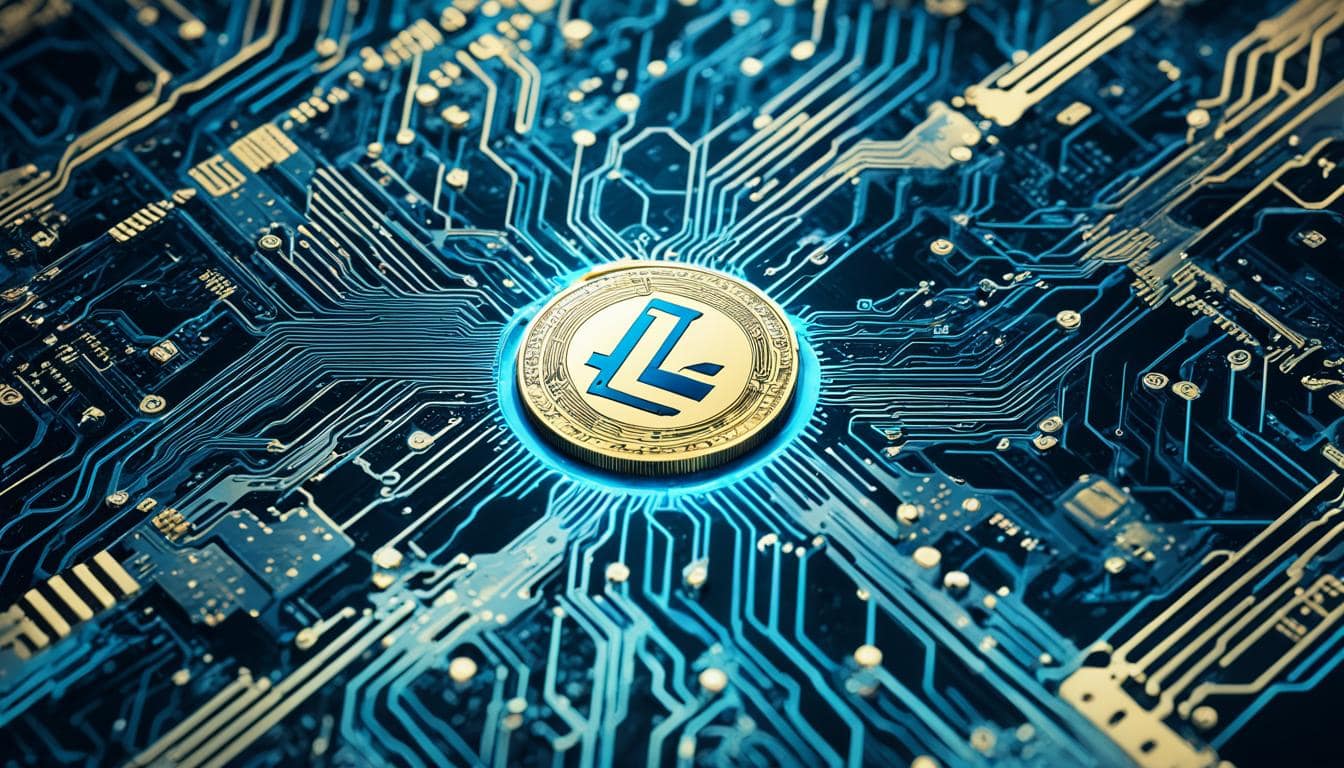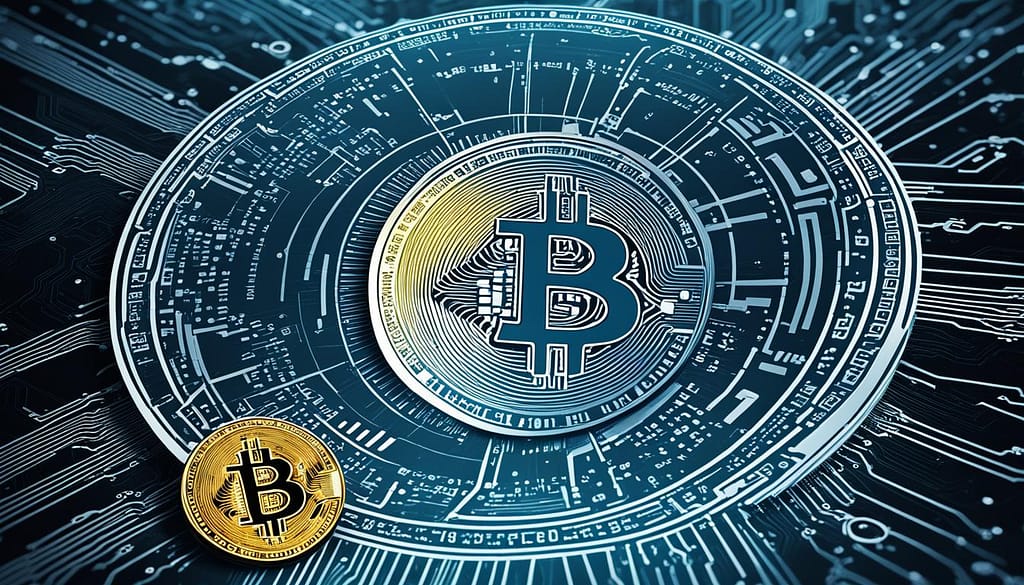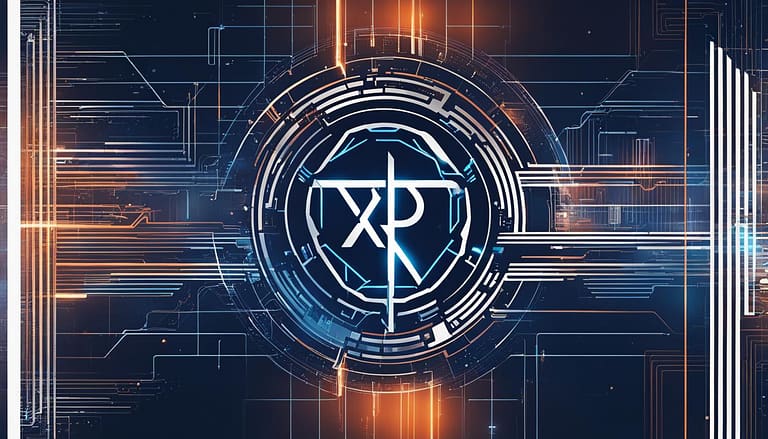What is Litecoin?
As the world of crypto continues to expand, those exploring the realm of digital currency are frequently introduced to Litecoin, a significant player among the myriad of cryptocurrencies available today. Litecoin, established in 2011, swiftly carved out its niche within the vast landscape of blockchain technology. Designed for speed and efficiency, Litecoin is a cryptocurrency with the distinct aim to simplify and expedite peer-to-peer transactions.
Born from the desire to address specific concerns within Bitcoin’s framework, Litecoin’s implementation brought with it several innovations, making it a favored option for daily financial activities. Often regarded as the ‘silver’ to Bitcoin’s ‘gold’, this crypto coin not only introduced changes in speed and processing methods but also made attempts at creating a more equitable mining environment conducive to individual involvement.
Key Takeaways
- Litecoin stands out as a key cryptocurrency, often referred to as the silver to Bitcoin’s gold, reflecting its position and purpose in the digital currency domain.
- The essence of Litecoin lies in its ability to process transactions rapidly, a fundamental feature made possible by a dedicated blockchain and its Scrypt hashing algorithm.
- As a form of digital currency, it embodies the principles of a decentralized payment network, free from a central governing authority.
- Litecoin was an early adopter of technological enhancements, aiming for quicker integrations within the marketplace.
- The crypto’s underlying blockchain technology continues to be improved, ensuring Litecoin maintains its competitive edge in a rapidly evolving industry.
- A pioneer in crypto evolution, Litecoin’s history and ongoing developments offer unique insights into both its future potential and its impact on the broader cryptocurrency ecosystem.
The Origins and Creator of Litecoin
Delving into the history of digital currencies, a landmark moment occurred in 2011 with the inception of Litecoin. Its creator, Charlie Lee, envisioned a new version of cryptocurrency that could operate alongside Bitcoin but with its unique modifications. Notably light in its digital footprint, Litecoin was engineered to address several of Bitcoin’s limitations, imbuing the crypto space with a fresh perspective on transaction efficiency and miner accessibility.
A Brief History
Litecoin’s journey commenced as a brainchild of Charlie Lee, designed to be the silver in a domain where Bitcoin was gold. It distinguished itself by employing the litecoin blockchain, a testament to both innovation and foresight in digital currency. While the initial goal of thwarting large-scale miners through its Scrypt encryption remained unfulfilled, Litecoin has steadfastly kept its ground in the competitive market landscape.
The Vision of Charlie Lee for Litecoin
The litmus test for any digital currency is its acceptance and usability. Charlie Lee’s ambition for Litecoin circled back to creating a democratic platform, where the efficiency of transactions and equity in mining were paramount. Despite the trials and tribulations along its path, Litecoin upholds the bedrock principles of a decentralized digital currency while continuously striving for inclusiveness and utility in everyday commerce.
Litecoin’s standing today is no accident; its origin is a compelling narrative of responding to industry challenges with adaptability and strategic advancements. It remains emblematic of an enduring commitment to its founding vision, continually recalibrating to the cadence of an ever-evolving digital currency ecosystem.
| Year | Achievement | Impact on Digital Currency |
|---|---|---|
| 2011 | Launch of Litecoin by Charlie Lee | Introduction of an alternative currency designed for faster transactions and a more democratized mining process |
| 2013 | Litecoin reaches $1 billion market capitalization | Establishes Litecoin as a significant player in the market and boosts confidence in alternative cryptocurrencies |
| 2017 | Implementation of SegWit (Segregated Witness) | Expands Litecoin’s potential for scalability, reducing transaction times and allowing for technological advancements like the Lightning Network |
| 2021 | 10-Year Anniversary of Litecoin | Marks a decade of resilience and adaptability, highlighting Litecoin’s long-term relevance in the digital currency space |
An Overview of Litecoin’s Technology
Litecoin has cemented itself in the digital currency space through a combination of blockchain innovation and distinctive mining practices. Unlike many cryptocurrencies that derive directly from Bitcoin’s protocol, Litecoin introduces key variations that appeal to users and miners alike, making it an integral part of the decentralized cryptocurrency landscape.
Decentralized Blockchain Foundation
Litecoin’s network operates on a decentralized blockchain foundation akin to that of Bitcoin. This structure upholds the integrity of a distributed ledger, ensuring that transactions are confirmed by consensus and recorded permanently. The adaptability and security of blockchain technology are central to Litecoin’s design, bolstering its establishment as a reliable medium of exchange and store of value.
Litecoin’s Unique Mining Algorithm: Scrypt
The mining process within Litecoin’s ecosystem is governed by the Scrypt algorithm, a critical aspect distinguishing Litecoin mining from other cryptocurrencies. Initially crafted to resist the concentration of mining power through ASIC miners, Litecoin’s Scrypt algorithm has been a point of keen interest and development in the blockchain community.
Despite the eventual advent of ASIC miners tailored for the Scrypt algorithm, its inception aimed to empower a broader user base to participate in mining. The memory-intensive nature of Scrypt remains a defining attribute, shaping the mining hardware ecosystem and affecting the overall efficiency and accessibility of Litecoin mining.
| Feature | Litecoin (Scrypt) | Bitcoin (SHA-256) |
|---|---|---|
| ASIC Resistance | Initially resisted, now tailored ASICs available | No resistance, ASIC mining prevalent |
| Memory Requirement | High | Low |
| Block Generation Time | 2.5 minutes | 10 minutes |
| Decentralization Objective | Encourage broader mining participation | Centralized mining pools dominate |
The attributes of the Scrypt algorithm not only define the litecoin mining approach but also its vibrant and participatory community. As a touchstone of decentralized cryptocurrency, the innovation that underpins Litecoin ensures that it continues to play a significant role in the evolution of blockchain technology.
Litecoin vs. Bitcoin: Key Differences
Understanding the disparities between Litecoin and Bitcoin requires a deep dive into their individual features. While at first glance these digital currencies may appear similar, being rooted in the concept of decentralization and peer-to-peer transactions, several key elements set them distinctly apart.
The very essence of any digital currency comparison must encompass the core characteristics that define its functionality. Innovations in blockchain technology are continuously refining how digital currencies like Litecoin and Bitcoin operate and relate with one another.
At the centre of the debate is the contrast in transaction speed and coin supply cap, which are fundamental to the user experience and investment potential of each currency. Below, we find a concise yet illustrative table that juxtaposes these core differences for a factual and straightforward appraisal.
| Feature | Litecoin | Bitcoin |
|---|---|---|
| Coin Supply Cap | 84 million | 21 million |
| Block Generation Timing | Approximately 2.5 minutes | Approximately 10 minutes |
| Mining Algorithm | Scrypt | SHA-256 |
In the context of mining, Litecoin favors the Scrypt algorithm, which affects its transaction approval rate and overall mining difficulty when compared to Bitcoin’s SHA-256. This intrinsic difference not only shapes the mining community but also has a direct influence on the rate at which transactions are processed, ultimately bearing implications for potential miners and the broader user community.
Lastly, the substantial variation in their coin supply cap engenders a distinct economic model governing the scarcity and long-term valuation of each currency. The fourfold larger supply of Litecoin may suggest a different inflation trajectory compared to its more scarce Bitcoin counterpart.
A rich understanding of these facets is essential for anyone navigating the lightweight yet expansive realm of cryptocurrencies. Whether for investment purposes or the allure of participating in the future of digital transactions, the distinctions between Litecoin and Bitcoin hold the key to informed decision-making.
The Role of ASIC Miners in Litecoin’s Network
The introduction of ASIC miners transformed litecoin mining from a hobbyist’s endeavor to a highly specialized industrial operation. Initially, the Litecoin network was designed to be mined with consumer-grade hardware, promoting broader network participation and distribution. However, as ASIC technology became prevalent, it enabled unprecedented computational power to be directed at litecoin mining, significantly increasing the network’s hash rate and efficiency.
Challenges and Adaptations of Litecoin Mining
In the wake of these swift technological advancements, the digital currency mining landscape encountered both opportunities and challenges. The evolution notably impacted Litecoin, with its community debating the implications on security, mining profitability, and the decentralization ethos. Responding to these concerns, developers and miners alike sought solutions that would align with Litecoin’s original mission.
Landscape of Mining: From Individuals to Corporations
The shift towards ASIC dominance inevitably led to the rise of corporate mining operations. With substantial financial and technical resources, these entities have formed considerable mining pools, contrasting sharply with the dispersed individual miner model envisioned by Litecoin’s progenitors. This centralization has introduced profitable economies of scale but has stirred concerns about network control and the inherent principles of decentralization within the realm of crypto mining.
Below is a general overview of how ASIC technology has transformed the mining landscape for Litecoin:
| Year | Development Impact | Response from Litecoin Community |
|---|---|---|
| 2014 | Introduction of ASIC miners to Litecoin, resulting in increased hash rate and difficulty. | Discussions on network security and miner diversity began to surface. |
| 2015-2017 | Dramatic improvement in ASIC miner efficiency, leaving CPU and GPU mining far less viable. | Increased emphasis on mining pools, with some advocating for measures to preserve mining accessibility. |
| 2018-Present | Consolidation of mining power within large-scale operations, marginalizing smaller miners. | Continued community discussions on decentralization, with some exploration of alternative consensus mechanisms. |
The ongoing adaptation to the ASIC mining era underscores the fluidity and resilience of Litecoin’s network. While the road ahead presents an intricate blend of technical innovation and philosophical adherence, Litecoin continues to be a pivotal player in the dynamic crypto mining landscape, navigating the tensions between digital currency evolution and its foundational values.
Understanding Litecoin’s Market Position
Amidst an ever-growing sea of digital currencies, Litecoin distinguishes itself with a robust presence. Renowned for its early establishment in the cryptocurrency realm, Litecoin’s perseverance is exemplified by its sustained position in the digital currency market. The key metrics that give Litecoin this enduring appeal in the eyes of traders and investors include its market capitalization and trading volume. These pillars of financial assessment provide indispensable viewpoints on the currency’s performance and influence within the broader crypto ecosystem.
Litecoin’s Market Capitalization and Trading Volume
Litecoin’s market capitalization is a testament to its relevance and attraction in the diverse stratum of cryptocurrencies. As an indicator of overall market value it encapsulates the currency’s standing relative to its peers. While trading volume reveals the vitality and liquidity of Litecoin as an asset, reflecting investor conviction as well as short-term trader interest. Together, these metrics offer a multifaceted understanding of Litecoin’s role within the competitive digital currency market.
The Significance of Litecoin in the Crypto Market
Litecoin has consistently cemented itself within the upper echelons of cryptocurrency rankings. Despite the entrance of numerous alternative coins, it remains unwavering in its status as a primary fixture in the array of cryptocurrencies. Its litecoin market capitalization showcases a testament to investor confidence and market stability. Similarly, its ability to sustain a significant trading volume exemplifies the continuous engagement and transactional activity occurring with Litecoin. These factors collectively solidify its stature within the complex and diverse digital currency market.
Litecoin Mining and Reward Halving
The dynamics of Litecoin mining are pivotal to the sustainability and vitality of this digital currency. In particular, the litecoin halving event plays a fundamental role in shaping the economic landscape of Litecoin. As it stands, the halving event is not merely a technical occurrence but a significant economic trigger that directly influences litecoin rewards and by extension, the entire practice of digital currency mining.
Understanding the concept of halving is essential for anyone engaged in Litecoin mining or considering it as an investment option. It is an automated process introduced to control inflation and incrementally reduce the number of new Litecoins entering circulation, theoretically ensuring that the value of the currency remains robust over time. The Litecoin halving that took place in August 2023 slashed the rewards from mining a block from 12.5 LTC to 6.25 LTC. This predictable yet significant change necessitates adaptive strategies from those involved in Litecoin mining.
| Date of Halving | Block Number | Reward Before Halving (LTC) | Reward After Halving (LTC) | Blocks Until Next Halving |
|---|---|---|---|---|
| August 2023 | 2,520,000 | 12.5 | 6.25 | 840,000 |
As a consequence of these halvings, Litecoin miners and investors are prompted to recalibrate their projections and mining operations to accommodate the diminished litecoin rewards. Notably, the principles of supply and demand begin to exert a more profound influence on Litecoin’s market value as the availability of new coins diminishes.
Both current and prospective participants in the realm of digital currency mining must stay apprised of these transformative events within the Litecoin ecosystem. They not only impact the immediate rewards for mining efforts but also have broader implications for market behavior and the long-term investment horizon of Litecoin.
Halving ensures that Litecoin does not suffer from the perils of unrestrained inflation, thereby cementing its status as a deflationary digital currency.
- Halving curtails the rate at which new Litecoins are minted.
- Each halving event tends to create anticipation and potential market volatility.
- The long-term effects of halving incentivize miners to maintain their efforts for more extended periods.
The practice of Litecoin mining continues to be a fascinating aspect of the digital currency world. With each halving, the community is reminded of the meticulous design of cryptocurrencies to emulate precious metals – creating scarcity to preserve value. Nonetheless, the future of Litecoin mining remains a carefully watched aspect, heavily influenced by the mechanics and repercussions of halving events.
How to Buy, Sell, and Store Litecoin
Engaging with Litecoin requires understanding the essentials of managing the digital currency. Whether you’re looking to buy Litecoin as an investment, sell Litecoin for profit, or store it securely for future transactions, the process involves specific steps suitable for both novices and experienced users in the realm of digital currency transactions.
Choosing a Litecoin Wallet
The first step in your Litecoin journey is to select a suitable litecoin wallet. This digital wallet will hold your private keys, granting you access to your funds while providing security against unauthorized transactions. Wallets range from online and mobile versions for ease of access, to hardware and paper wallets for enhanced security.
Several noteworthy wallet providers include:
- Hardware wallets like Ledger and Trezor for high-level security.
- Mobile wallets such as LoafWallet and Exodus for convenience on the go.
- Desktop clients like Litecoin Core, offering complete control over your assets.
Opt for a wallet that balances convenience and security to your preference.
Navigating Cryptocurrency Exchanges for Litecoin Transactions
When ready to buy or sell Litecoin, the marketplace you’ll navigate is the myriad of cryptocurrency exchanges. Each platform comes with its own set of features, fees, and security measures. Major players like Coinbase, Binance.US, and Kraken dominate in terms of user volume, providing a robust ecosystem for Litecoin enthusiasts to partake in digital currency transactions.
Before initiating a transaction, consider the following:
- Are you using a centralized exchange that requires identity verification, or a decentralized platform that offers more anonymity?
- What are the fees associated with buying, selling, and withdrawing?
- How does the exchange handle direct fiat exchanges for those looking to withdraw in their local currency?
Advanced traders may prefer exchanges that support various trading pairs and offer additional features such as margin trading or futures contracts. For beginners, simplicity and educational resources might be more critical to help navigate their early transactions.
In summary, carefully selecting a litecoin wallet and navigating cryptocurrency exchanges are foundational to effectively buy and sell Litecoin. With these tools at your disposal and a grasp of the basics of digital currency transactions, you’re well-equipped to participate in the ever-growing world of Litecoin and cryptocurrencies at large.
Future Developments and Enhancements in Litecoin
The landscape of cryptocurrency innovations is constantly reshaped by emerging technologies and the persistent drive to refine digital transaction mechanisms. Litecoin, at the forefront of digital currency advancements, champions this progressive ethos. Upcoming litecoin developments promise to not only bolster current features but also to introduce revolutionary functionalities that firmly anchor Litecoin within the realm of cutting-edge blockchain technology.
One significant leap under active consideration is the implementation of the MimbleWimble protocol. This privacy-centric technology aims to anonymize transactions on the blockchain, representing a staunch commitment to user security. Trust in Litecoin’s infrastructure is likely to rise as a result, drawing new users looking for robust privacy features in their digital currency transactions.
MimbleWimble’s role in Litecoin’s evolution encapsulates the currency’s ambition—building an expansive, secure, and agile network, ready for the demands of tomorrow’s digital economy.
Enhancements in Litecoin also converge on improving scalability—a critical factor for any flourishing cryptocurrency. By optimizing transaction processing and blockchain efficiency, Litecoin is anticipated to handle a growing number of transactions with ease, thereby ensuring the currency remains competitive and viable.
| Development Area | Current Status | Expected Advancements |
|---|---|---|
| Transaction Speed | Approximately 2.5 minutes per block | Faster block validation and propagation |
| Privacy and Security | Transparent blockchain | Integration of MimbleWimble Protocol |
| Scalability | Handles a considerable number of transactions | Increased throughput and compacted data sizes |
As Litecoin navigates these enhancements, the primary goal remains—to offer a decentralized platform that champions cryptocurrency innovations without sacrificing the original virtues that make it a standout digital currency.
Keeping pace with blockchain technology necessitates not only technical agility but also an unwavering dedication to the community’s needs. Therefore, as Litecoin prepares to unveil these developments, it reassures its users that the step forwards is not just a stride in technology but also a commitment to maintaining an inclusive and forward-thinking digital ecosystem.
Conclusion
The journey of Litecoin stands as a testament to the dynamism of blockchain technology and its profound influence on the digital currency landscape. As investors and enthusiasts assess the path ahead, the core question remains—does Litecoin hold its ground as a viable investment for the long haul? Navigating through its historical strides and technological milestones provides insight into its potential future trajectory.
Assessing Litecoin’s Long-term Viability as an Investment
The avant-garde emergence of Litecoin brought forth an alternative to the status quo of cryptocurrencies, promising faster transactions and an egalitarian mining approach. However, the true litmus test for any digital currency, Litecoin included, pivots around consistent market adoption, a unique competitive advantage, and an adaptable regulatory stance. In the melange of burgeoning coins and tokens, Litecoin’s distinct qualities and steadfast presence suggest a capacity to endure the complex variables that influence long-term investment success.
Litecoin’s Contribution to the Progress of Cryptocurrencies
From its incipience, Litecoin has propounded key developments in blockchain technology, including SegWit and the Lightning Network, showcasing its dedication to digital currency growth and scalability. These innovations underscore Litecoin’s commitment not only to refining its own network but also to bolstering the entire cryptocurrency future. By setting precedents in speed, security, and network efficiency, Litecoin continues to be a valuable player, exerting a blockchain influence that echoes through the corridors of digital finance.
FAQ
What is Litecoin?
Who created Litecoin and what was the vision behind it?
How does Litecoin’s blockchain technology work?
What are the key differences between Litecoin and Bitcoin?
How have ASIC miners impacted Litecoin’s network?
What is Litecoin’s market position in the cryptocurrency space?
What is Litecoin halving and how does it affect mining rewards?
How does one buy, sell, and store Litecoin?
What are the future developments anticipated for Litecoin?
How does one assess Litecoin’s long-term viability as an investment?
What has Litecoin contributed to the progress of cryptocurrencies?
Source Links
- https://www.investopedia.com/terms/l/litecoin.asp
- https://www.investopedia.com/articles/investing/040515/what-litecoin-and-how-does-it-work.asp
- https://www.fool.com/terms/l/litecoin/










